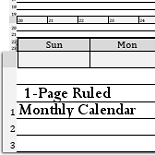Sentence Building—Activity One
Activity one uses the sentence structure Subject | Transitive Verb | Direct Object and the student adds to the sentence so the final sentence will also have adjectives, an adverb, and possibly a prepositional phrase. My objective for this activity is sentence building, and while doing so, add important skills in communicating, brainstorming, editing, and looking up words.
Regarding the use of a thesaurus, your students might not need to use it at all. It's simply there in case they need it. Activity Two calls for specific use of a thesaurus.
The daily exercises do not take long. Each student is to work on only one sentence at a time.
Day One
Writing the Sentence
Write this sentence on your board and read it aloud to your children. Have your children open their notebooks and write the sentence on the next blank page.
An animal caught prey.
Resources to have on hand:
- A book with pictures and names of animals such as an animal encyclopedia or the A book from your encyclopedia set.
- A thesaurus
Explain to the children that they are to do the following:
- Substitute the word "animal" with a specific kind of animal. [The child may add adjectives; adjectives are optional today.]
- Substitute the word prey with the type of prey the animal caught. [The child may add adjectives; adjectives are optional today.]
- Modify or substitute the verb -- For instance modify with an adverb: quietly,
ferociously, loudly, etc. In the examples, child #1 modified the verb.
OR choose a different verb that indicates a similar action or end result. In the examples, child #2 changed the verb.
Examples
- A lion caught the gazelle loudly.
- A hideous snake jumped out of a tree upon and straggled a helpless deer.
Day Two
Revising
Today the children will improve their sentences.
Resources to have on hand:
- A thesaurus
- A grammar reference book if step four is necessary
There are some ifs to consider. Choose one or more depending on how well they did step one.
- If the student opted out of adjectives yesterday, have them add an adjective or two today.
- If they didn't substitute the words animal or prey, have them do that today.
- If they didn't modify or change the verb, do that today.
- If the sentence is descriptive enough, have them improve the grammar, usage, or rearrange the sentence.
- An older student might opt to add a prepositional phrase.
Student 1 used revision #1 and changed the verb.
Student 2 used revisions #4 & #5.
Revised Examples
- A very smelly lion sprang on the goofy gazelle very loudly.
- Out of a tree a hideous snake jumped upon a helpless deer and strangled it.
Child #1 used very twice. About the use of very - it is better to use a strong word than to place "very" in front of it. It ended up that she substituted the first "very" on day four with "extremely." That was not necessarily a move in the right direction, but it was a move. Over time, her use of words improved. Activity two is helpful in the area of using specific words.
Day Three
When
Resources to have on hand:
- A thesaurus
Today the children will imply when the animal caught its prey. They can be creative if they wish such as:
- One foggy morning,
- Last night under a bright full moon,
- Or it can be as simple as Yesterday, or Last night.
Examples
- In the middle of the night, out of a tree a hideous snake jumped upon a helpless deer and strangled it.
Day Four
Revising
This step is necessary if the children want to improve what they added to their sentences yesterday or if you want them to improve their sentences.
Resources to have on hand:
- A thesaurus
Things they could do depending on their skill level:
- Describe the "When" more vividly.
- Rearrange the sentence.
- Describe the animals better.
- Improve grammar
Revised Examples
- An extremely fuzzy lion sprang on the decorous gazelle happily.
- In the middle of the night, a hideous snake jumped out of a tree and strangled a helpless deer.
Extra Sentences
Activity One can be repeated
as needed. Choose from the sentences below to repeat the lessons in
activity one or make up sentences.
If you wish to make sentences, the sentence structure is:
| Determiner
[optional] | Noun |
Transitive Verb | [another limiting adjective may added be here] | Noun |
Grammatical Structure is:
Subject | Transitive Verb | Direct Object
- A boy ate food.
- A child walked a dog.
- Someone read a periodical.
- The girl rode a bike.
- The animal frightened an animal. | examples below
- A child reads a book.
- Someone cooked food.
Examples From Sentence #5
1. Midnight frightened the superstitious dog by walking in its path.
2. The cat frightened the unusually large fly by jumping into the air and
swiping at it with its paws.
About the Examples
In all of the examples, number one was work by my daughter and number two was work by my son. When we started this, # 1 was probably in grade 3, and if so, her brother, # 2, was in grade 6. We did the exercises off and on over the course of several years.
Voice and the Transitive Verb
The sentences in this exercise uses transitive verbs. The direct object requires a transitive verb. There is something interesting about the transitive verb and passive voice. Only transitive verbs can be made passive. Check it out:
Active Voice: An animal caught prey.
Passive Voice: Prey was caught by an animal.
Active Voice: Someone cooked food.
Passive Voice: Food was cooked by someone.
Children should learn to recognize the passive voice at some time during their years in school. They should know that the passive voice is undesirable in certain types of written work. Because of that, they will benefit from yearly exposure to the voice of a sentence, how to recognize it, how to use it, and how, why, or when to change it.
Hello Visitor!
I am currently working on this website to add to its ginormousness. Thank you for visiting, and please subscribe yearly to access my many printable files! Donna Young
May 13, 2021

 This is an undated "dated" blank monthly calendar.
This is an undated "dated" blank monthly calendar. Household- Half-sized - Paper
Household- Half-sized - Paper Exploring Color Theory
Exploring Color Theory


